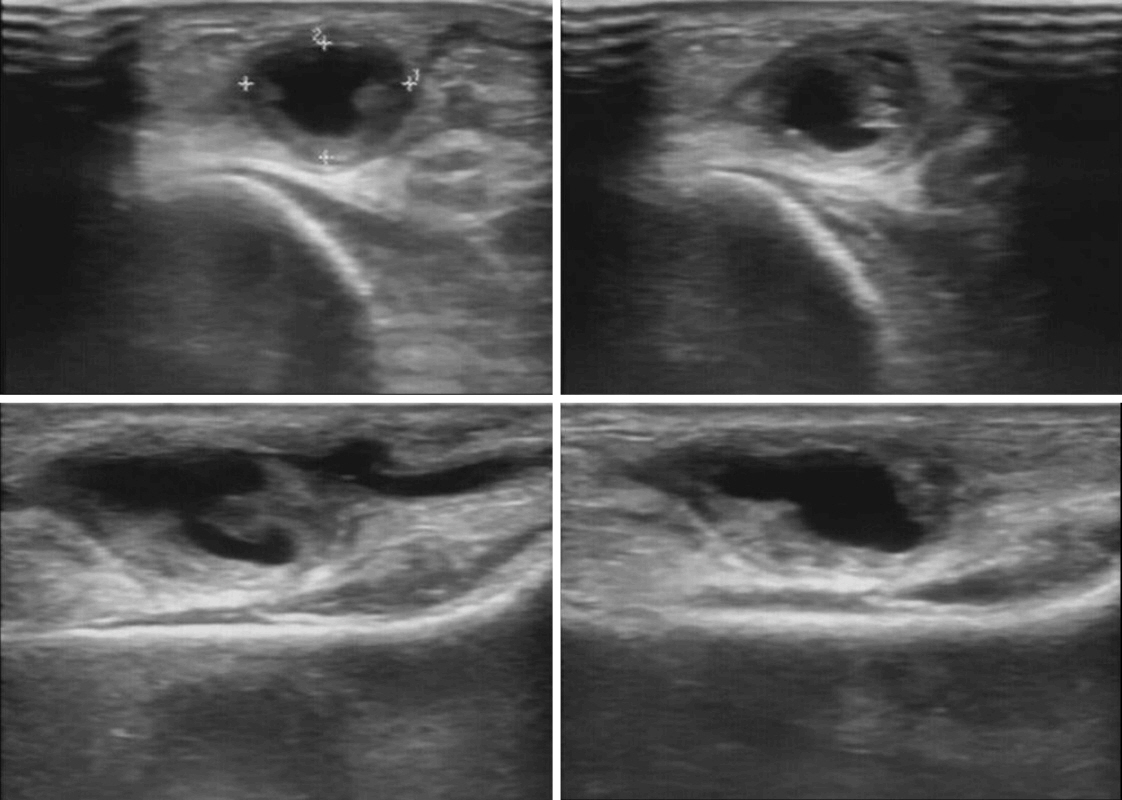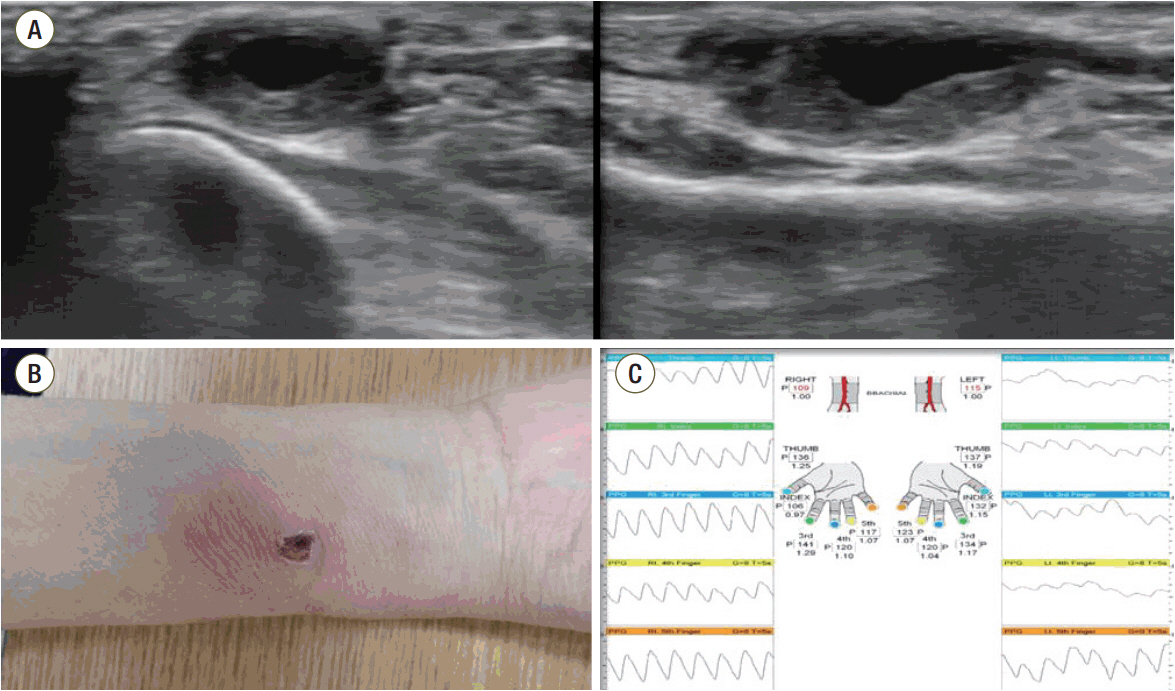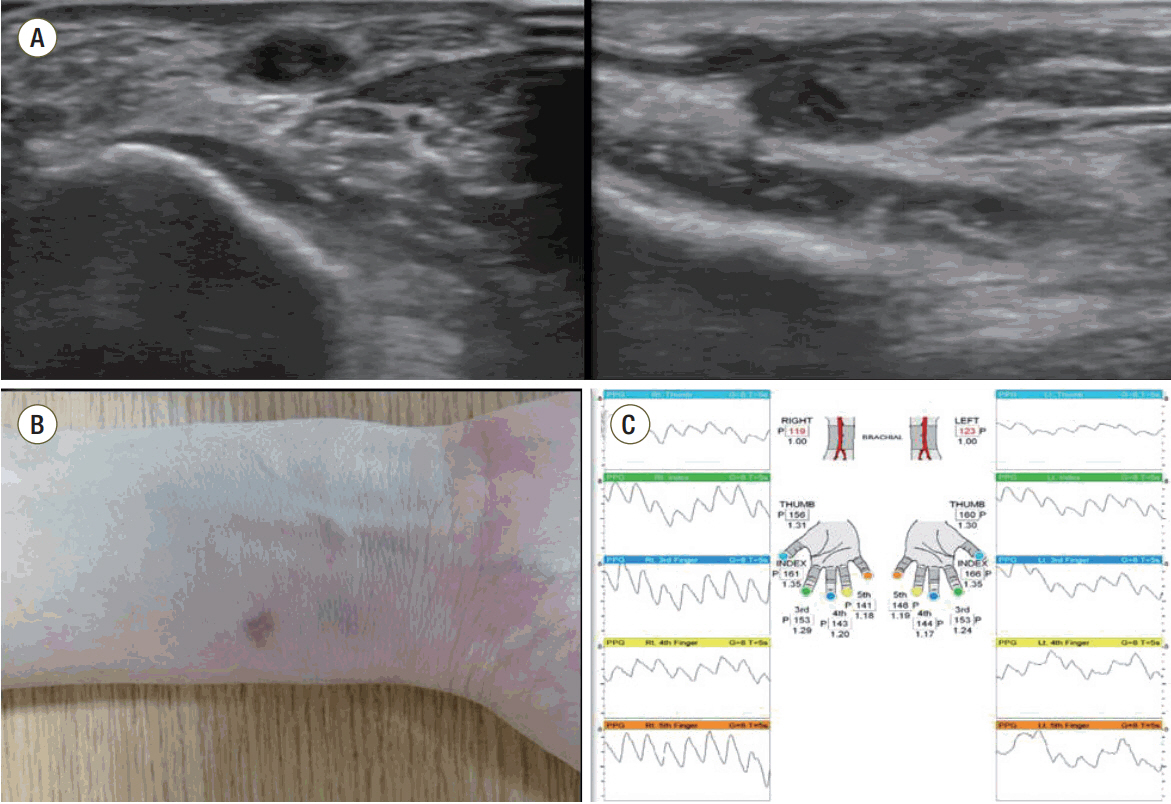Korean J Crit Care Med.
2016 Nov;31(4):375-380. 10.4266/kjccm.2016.00430.
Radial Artery Pseudoaneurysm Treated with a Compression Bandage after Invasive Blood Pressure Monitoring in a Patient with a Traumatic Injury
- Affiliations
-
- 1Department of Surgery, Chosun University School of Medicine, Gwangju, Korea. ysyoo@chosun.ac.kr
- KMID: 2371196
- DOI: http://doi.org/10.4266/kjccm.2016.00430
Abstract
- No abstract available.
MeSH Terms
Figure
Reference
-
References
1. Klinke WP, Hilton JD, Warburton RN, Warburton WP, Tan RP. Comparison of treatment outcomes in patients > or =80 years undergoing transradial versus transfemoral coronary intervention. Am J Cardiol. 2004; 93:1282–5.2. Bazemore E, Mann JT 3rd. Problems and complications of the transradial approach for coronary interventions: a review. J Invasive Cardiol. 2005; 17:156–9.3. Yang YJ, Kandzari DE, Gao Z, Xu B, Chen JL, Qiao SB, et al. Transradial versus transfemoral method of percutaneous coronary revascularization for unprotected left main coronary artery disease: comparison of procedural and late-term outcomes. JACC Cardiovasc Interv. 2010; 3:1035–42.
Article4. Kajiya T, Agahari F, Wai KL, Tai BC, Lee CH, Chan KH, et al. A single-center experience of transitioning from a routine transfemoral to a transradial intervention approach in ST-elevation myocardial infarction: impact on door-to-balloon time and clinical outcomes. J Cardiol. 2013; 62:12–7.
Article5. Stansby G, Smout J, Chalmers R, Lintott R. MRSA infected pseudoaneurysms of the radial artery. Surgeon. 2003; 1:108–10.
Article6. Uhlemann M, Möbius-Winkler S, Mende M, Eitel I, Fuernau G, Sandri M, et al. The Leipzig prospective vascular ultrasound registry in radial artery catheterization: impact of sheath size on vascular complications. JACC Cardiovasc Interv. 2012; 5:36–43.7. Liou M, Tung F, Kanei Y, Kwan T. Treatment of radial artery pseudoaneurysm using a novel compression device. J Invasive Cardiol. 2010; 22:293–5.8. Bhat T, Teli S, Bhat H, Akhtar M, Meghani M, Lafferty J, et al. Access-site complications and their management during transradial cardiac catheterization. Expert Rev Cardiovasc Ther. 2012; 10:627–34.
Article9. Reus M, Vázquez V, Alonso J, Morales D, Rodrí- guez JM. Treatment of a radial artery pseudoaneurysm with ultrasound-guided percutaneous thrombin injection in a patient with Behcet’s syndrome. J Clin Ultrasound. 2003; 31:440–4.
- Full Text Links
- Actions
-
Cited
- CITED
-
- Close
- Share
- Similar articles
-
- Superficial Temporal Artery Pseudoaneurysm Treated with Manual Compression Alone
- Continuous Blood Pressure Monitorings during Cardiovascular Opertions in Takayasu`s Syndrome
- Pseudoaneurysm Following Cannulation of Radial Artery in Cerebral Aneurysm Patient
- Radial Artery Pseudoaneurysm after Arterial Blood Gas Analysis: A Case Report
- Traumatic Pseudoaneurysm of the Superior Rectal Artery with Recurrent Lower Gastrointestinal and Pelvic Extraperitoneal Bleeding: Importance of Pretreatment Recognition






